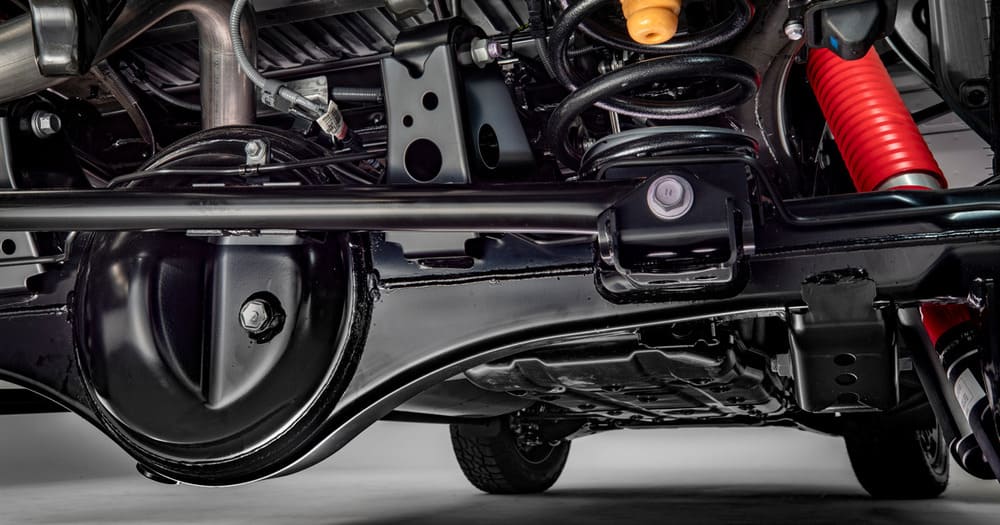
Your car’s suspension maximizes friction between the vehicle itself and the road. The health and proper function of your vehicle suspension is critical to safe operation. Check out this guide to everything you need to know about vehicle suspension from the expert Baltimore mechanics at Hollenshade’s.
BUSHINGS
Hydraulic bushings have chambers and valves to help absorb vibration and change the angles under certain conditions. Bushings at the rear of the control arm deflect under braking to toe out the front wheels. This type of bushing improves stability and can make turn-in more responsive. On vehicles with this type of design, a Wheel Alignment service should only be performed on proper equipment by a qualified auto repair professional.
SPRINGS
Some strut suspensions have springs; there are left and right springs. These springs need to be correctly oriented so they can work properly when the car is going straight and when the wheel is turned. Pre-assembled struts (a.k.a. ‘loaded struts’) can be out of adjustment. Additionally, a professional installer will verify the correct torque of all nuts and bolts during installation and subsequent alignment.
SUB-FRAME
Subframes take the suspension loads and isolate the uni-body. These can be constructed of aluminum or steel. Some manufacturers are using the subframes as a deformable structure that absorbs energy in a crash. Many use long bolts that are torque to yield. Large potholes and curb strikes will shift the vehicle subframe. If the subframe shifts or deforms, the wheels and tires become out of alignment. Also, over time large subframe bolts can loosen and allow the subframe to shift during braking, turning or acceleration. If you hear knocking or popping noises from the suspension, consult an experienced and trusted local mechanic.
TIE-RODS
The outer tie-rod ends have transitioned to a full ball design. The balls are surrounded by a plastic insert made of engineered plastics. Most of the play specifications are so small you can’t feel any play. If they are making noise or you can see movement in a dry-park test, recommend replacement. Many tie rod ends have a torque specification with a torque angle. This is prevalent on vehicles that use an aluminum knuckle.
ELECTRIC POWER STEERING
Electric power steering is becoming more common as automakers seek to increase fuel economy. Some of these racks have an integrated module that communicates on a CAN bus. If you have to install a rack, it will require A scan tool to calibrate the steering angle sensor and maybe a tool to program the module to the vehicle.
ELECTRONIC PARKING BRAKE
Electric parking brake designs are such that they can free up interior space by turning a lever or pedal into a button. But, being able to retract the caliper in order to replace the brake pads is critical for service. To collapse the caliper piston properly a professional-grade bi-directional scan tool is required.
CALIPER BOLTS
Caliper bracket bolts have changed in the past 15 years. Some bolts are torque-to-yield or use thread locking compounds. New thread-locking compounds are also designed to prevent corrosion because the bolt and knuckle are made of dissimilar metals. Some automakers advise not to reuse the caliper bracket bolts in the service information. The bolts on some applications can be of a torque-to-yield design.
ACTIVE SUSPENSION
Look for more electronically controlled shocks and struts. Continuously controlled dampeners are here but these systems will become commonplace on mid-level and economy vehicle platforms. The sway bar acts as a third spring on the suspension. models using them to improve ride quality as well as vehicle stability. These systems make changes in milliseconds. Ford has made a pothole mitigation system that blocks off the valving so the wheel will not drop into a pothole. This system uses 12 sensors including a bumper-mounted sensor.
SWAY BAR
The sway bar functions as a third spring within the vehicle suspension system. Conventional sway bars work only when the vehicle is rolling and transferring weight side-to-side. But they can restrict suspension travel and cause unpleasant ride characteristics under certain conditions. Chrysler, Jeep and many other automakers are integrating sway bar designs that allow it to decouple and actively change stiffness.
BRAKE ROTOR
Brake rotors are also changing. As new and more stringent CAFE fuel-efficiency standards kick in, manufacturers are looking for new ways to reduce weight. Cast iron is still king, but the hat of the rotor will see some changes as some rotors go to a composite design. BMW, GM and Fiat have already adopted this technology on some mid-level and high-end vehicles. For technicians, there are new considerations and adapters for machining rotors in a very limited number of situations. Often, replacement of the brake rotor after its service life is strongly recommended with new brake pads.
Courtesy of hollenshades










